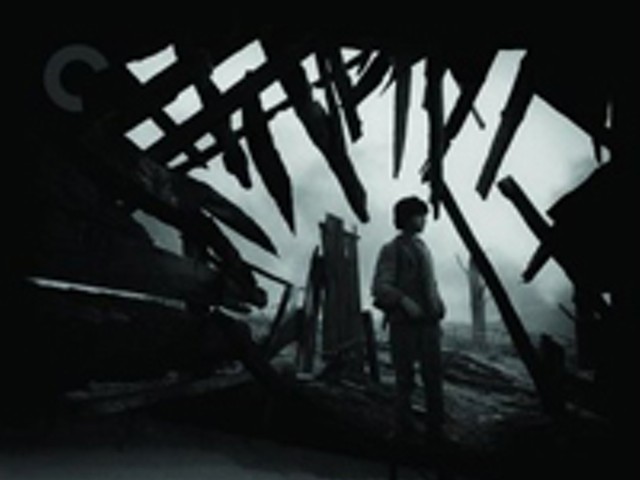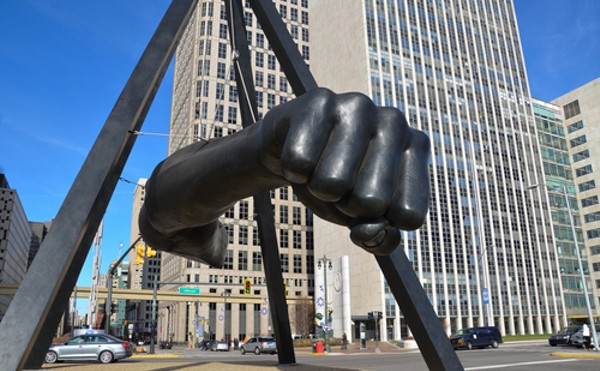In a post-trial interview in 1987, one of the jurors who convicted Frederick Freeman of first-degree murder said the most compelling evidence was the single eyewitness who put Freeman at the murder scene.
"The thing that finally convinced me was the testimony of Rene Gobeyn," the juror told the Port Huron Times-Herald newspaper.
Gobeyn was then a 20-year-old sophomore concentrating in criminal justice at St. Clair County Community College with intentions of becoming an FBI agent. Pausing during the walk to his philosophy class the morning of Nov. 5, 1986, he heard a shot and then noticed a car driving toward him.
He didn't know Scott Macklem lay dying across the parking lot, but he did think the noises and the car were unusual enough to take notice. He was later hypnotized to help his recall.
"I don't know, something told me to get a look at it and I did," he said at trial. He figures he got roughly a 20-second look at the car and spent about five seconds on the driver's face.
Gobeyn would later pick Freeman out of a photo lineup and then be the only one of three people to pick him out of a physical lineup.
"I saw him. It wasn't somebody that resembled him," Gobeyn said of Freeman at the trial. "It was him."
But was it?
"You don't need to be a rocket scientist or an expert to know this is an outrageous identification case," says Ezekiel Edwards, a staff attorney and Mayer Brown Eyewitness Fellow at the Innocence Project in New York.
If the hundreds of exonerations to date using irrefutable DNA evidence have shown anything, it's that witnesses get it wrong. A lot.
According to the Innocence Project, mistaken identifications are the leading factor in wrongful convictions.
Several studies also have shown a significant reduction in accuracy if the perpetrator was wearing a hat. Gobeyn described the driver as wearing a ski mask pushed up on his head.
The Center on Wrongful Convictions in Illinois released a report this year that found 52 defendants who were eventually exonerated were convicted as a result of erroneous eyewitness identification.
In 2003, nearly 80 percent of the first 130 DNA exonerations in the United States involved mistaken eyewitness identification, according to the Innocence Project.
Jennifer Thompson-Cannino was one of those witnesses and now travels nationally to warn about the inaccuracies of identification.
"Not all eyewitness identification is bad. What I find is that a lot of eyewitness identification retrieves people's memory incorrectly. By the time we make identification, there's so much in our memory that, really, our memories are not pure. That's what happened to me," she says.
Raped for 30 minutes as a college student in North Carolina in 1984 after a man broke into her apartment, Thompson-Cannino says she made it a point to study her attacker at the time.
"I tried to study anything I could study about him. I tried to pay attention to the details of his face. I tried to figure out how tall he was and how much he weighed and how he put his hands on his hips and if he was pigeon-toed," she says.
She helped police make a composite sketch and then she picked a man named Ronald Cotton out of photo and physical lineups.
With no physical evidence — DNA was not yet used in 1984 — and only circumstantial evidence putting Cotton at the scene, Thompson-Cannino's testimony was key.
"I was a very convincing witness because I honestly believed that I had made the right identification. I was so sure," she says.
Cotton was convicted in 1985 and sentenced to life plus 54 years. He received a retrial because the jury hadn't heard that a second victim had picked a different man out of a lineup. While Cotton was in prison awaiting the second trial, another man told another prisoner he had committed the rapes for which Cotton was accused.
Thompson-Cannino says she saw the second man and told police no, it was Cotton who attacked her. He was convicted again in 1987.
But in 1994, Cotton's lawyers won their motion for DNA testing of remaining physical evidence. It didn't match Cotton. It matched the man who'd said he was the rapist.
"I was able to look at my attacker for minutes and minutes and minutes at close range and I still made a mistake. When I hear people say, 'How long did you get a glimpse of the attacker?' and they say, 'five to 10 seconds," that is very frightening. You cannot compartmentalize someone's face in five seconds and say, 'Boy, I know.'"
But that's what Gobeyn did. And Freeman's jury believed him.
Today Gobeyn lives in a lakeside house in Oakland County with his wife of four years who is from Kosovo. He met her there while he was doing police work for the United Nations after he resigned his position with Oak Park Public Safety. She, too, was a police officer.
Gobeyn told Metro Times that he has followed the Freeman case somewhat. Standing over 6 feet tall, Gobeyn's closely cropped hair is graying but his blue eyes are intense. He's friendly and articulate but will not talk about his role in Freeman's trial.
"I don't want to say one way or another," Gobeyn said. "I don't know what the updates are or anything like that. Because it's ongoing and the attorney general's office is involved and I haven't talked to the police or prosecutors, I'm not going to say. It was a long time ago."
But Gobeyn looked at pictures of Freeman and a man Freeman's defense team thinks did the killing. They both have dark hair and large noses. Their profiles are eerily similar.
Gobeyn shrugged as he held them.
"I have no idea who he is," Gobeyn says, but he followed his statement. "Did they say what his name is? I'd just like to know who he is."
Sandra Svoboda is a Metro Times staff writer. Contact her at 313-202-8015 or [email protected]




